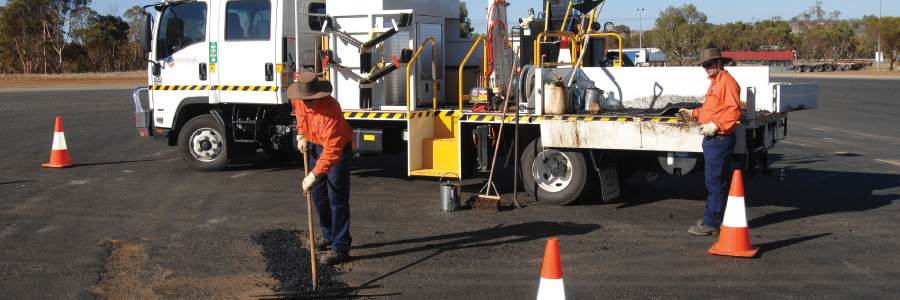Preserve the safety, health and wellbeing of our people.
Creating a mature safety culture that challenges safety complacency built around an ethos of Think Safe, Work Safe, Home Safe, Drive Safe, Live Safe.
|
2014 Actual |
2015 Target |
2015 Actual |
|
|---|---|---|---|
|
Fatalities |
0 |
0 |
0 |
|
Lost Time Injury frequency rate |
7.6 |
2 |
1.5 |
|
Incidence rate |
1.2 |
1.08 |
1.28 |
|
Severity rate |
0.2 |
0.18 |
0 |
|
Percentage of injured workers that returned to work |
|||
|
Within 13 weeks |
83% |
85% |
85% |
|
Within 26 weeks |
17% |
80% |
92% |
A Safe Observation Conversation allows interaction between a supervisor/manager and an employee/contractor. It provides an opportunity to identify, discuss and prevent workplace hazards and at-risk behaviours before they cause harm. This initiative was implemented in March 2015 to:
The introduction of Safe Observation Conversations aligns with our transition into a more mature culture that has strong collaborative relationships and leadership demonstrated at all levels.
An ergonomic e-learning module has been developed to assist staff to assess their workstation setup and enable them to mitigate ergonomic injuries. Other safety compliance-based training, such as the Corporate Safety Induction and Asbestos Awareness Training, are being transitioned into e-learning to allow for high-impact training, such as scenario-based training. This will have greater impact in the capability development of our workforce.
Safety Commitment Cards promote a positive safety culture and demonstrate commitment to safety at every level of the business. We invite staff to sign a commitment poster within their team, which serves as a tangible and visible reminder of our duty of care as employees and employers.
The concept was developed by a working group that discussed initiatives to promote and lead Safety, Health and Wellbeing across the State.
Our health and wellbeing resource centre is regularly updated, aligning with our commitment to providing a confidential Employee and Manager Assistance Program. This organisation-funded counselling service provides support to employees who may be experiencing problems that are affecting their job performance or personal lives.
Our corporate Health and Wellbeing Calendar gives employees the opportunity to participate in community charity events such as the City to Surf, HBF Run for a Reason and various Government-endorsed corporate sports activities. We encourage staff to take part in organised activities to raise funds for charity, and participate in presentations and activities that promote healthy behaviours or interventions.
After a number of serious incidents involving manual guidepost rammers, petrol guidepost rammers have been researched and trialled. The implementation of this engineering control has decreased guidepost rammer-related serious incidents, with zero incidents recorded since inception. Manual handling hazards, which were present with manual guidepost rammers, have also reduced.
Our Occupational Safety and Health Management System (OSHMS) has been assessed and recommended for re-certification to Australian Standard 4801 in July 2015. Corporately, we maintain
a WorkSafe Plan – Gold Certification.
Lost Time Injury/Date is defined as an injury or disease that results in the affected employee being unable to work for one full shift or longer. The following graph illustrates the combined performance of Main Roads and our contractors during the year.

*We rely heavily on all contractors to provide accurate information within the required timeframe. LTI Contractor statistics are accurate at the time of reporting.
The majority of the serious incidents involved vehicles, plant, and manual tasks/ergonomics. Our focus now is to minimise the likelihood of these risks recurring.
|
Incident Types |
Lost Time Injuries |
Non Lost Time Injuries |
Near Miss Incidents |
Total |
|---|---|---|---|---|
|
Vehicle |
1 |
3 |
17 |
21 |
|
Equipment |
3 |
11 |
19 |
33 |
|
Ergonomics/manual tasks |
5 |
20 |
5 |
30 |
|
Other |
3 |
8 |
21 |
32 |
|
Slips, trips and falls |
1 |
5 |
7 |
13 |
|
Human factors |
1 |
3 |
5 |
9 |
|
Bites/stings |
0 |
2 |
0 |
2 |
|
Environment |
0 |
1 |
2 |
3 |
|
Health |
0 |
4 |
0 |
4 |
|
System failure |
0 |
2 |
0 |
2 |
|
Total |
14 |
59 |
76 |
149 |
Initiatives developed around injury prevention and management include:
Of our injured workers 85 percent have returned to their pre-injury role and hours within 13 weeks and 92% have returned between 13 and 26 weeks of sustaining their injury.


Goldfields-Esperance Region, Great Southern Region, Kimberley Region and Midwest-Gascoyne Region all achieved zero Lost Time Injury Frequency Rates during the last year, with the Goldfields-Esperance Region not experiencing a lost time injury since March 2013.
Local improvement initiatives within the regions, at a directorate level and corporately helped achieve this result. They included:
Our safety and leadership oriented culture has improved through our collaborative approach that has reduced lost time injuries across the whole organisation.
Actively improving work safety, health and wellbeing.
CONNECT WITH US